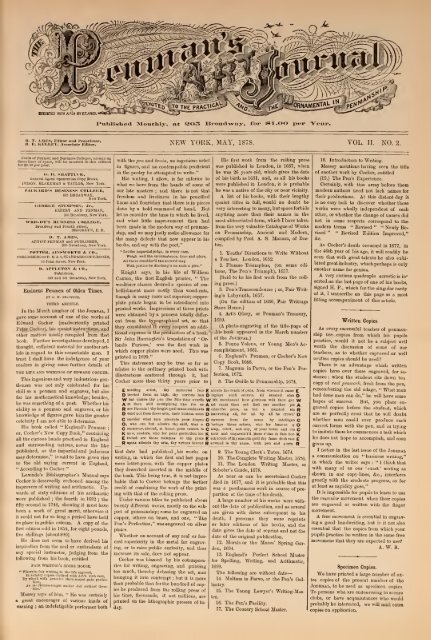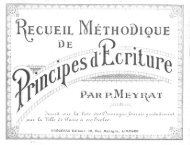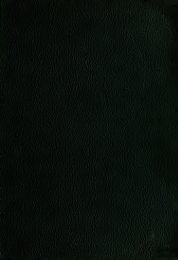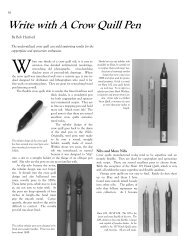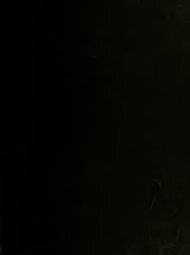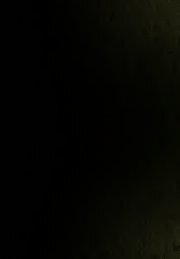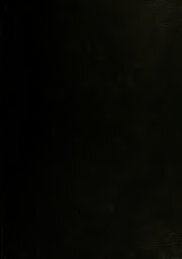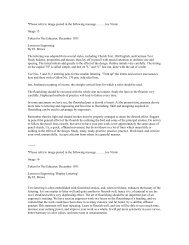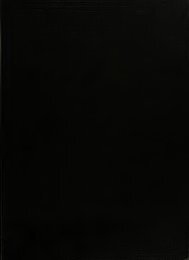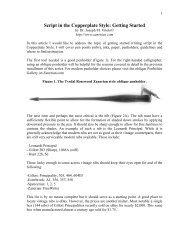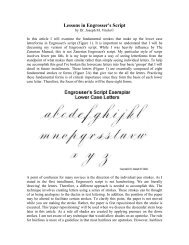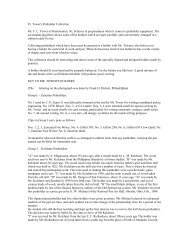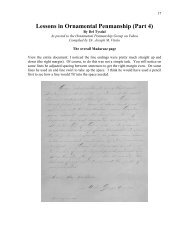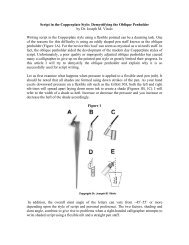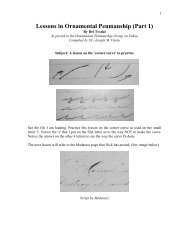Penman's Art Journal (Volume 2) - Iampeth
Penman's Art Journal (Volume 2) - Iampeth
Penman's Art Journal (Volume 2) - Iampeth
Create successful ePaper yourself
Turn your PDF publications into a flip-book with our unique Google optimized e-Paper software.
G. II. »«HATTUCK,<br />
, BLAKEMAN & TAYLOR. ><br />
ft« ^i^> 4^f<br />
Fublislied TMontHly, at SOS Broad-way, fox- SI .OO per Year,<br />
,iid ProprleioFi NEW YORK, MAY, 1878. VOL. II. NO. 2.<br />
[.iKORGE STOIFSON. Jr.,<br />
EXPERT AND PENMAN,<br />
205 Broadway, New Yorl<br />
dusine88 college,<br />
buookl'yn, e. d.<br />
ARTIST-PENMAN and PUBLISHER,<br />
POTTER, AINWWORTH &: CO<br />
. APPI-ETON A: (<br />
Eminent Penmen of Olden Times.<br />
lu the Miiich number of the <strong>Journal</strong>, I<br />
gftve some account of one of the works of<br />
Edward Cocker (inadvertently printed<br />
Peter Cocker), his quaint instructions, and<br />
other matters mostly compiled from that<br />
bonk. Further investigations developed, I<br />
thought, sufficient material for another art-<br />
icle in regard to this remarkable man. I<br />
trust I shall have the indulgence of your<br />
readers in giving some further details of<br />
5 COOKER.<br />
This ingenious and very industrious gentleman<br />
was not only celebrated for his<br />
skill aa a penman and engraver, but also<br />
for his mathematical knowledge; besides,<br />
he was something of a poet. Whether his<br />
ability as a penman and engraver, or his<br />
knowledge of figures gave him the greater<br />
celebrity I am not able to determine.<br />
His book called " England's Penman ;<br />
or, Cocker's New Copy Book," containing<br />
b11 the curious hands practised in England<br />
and surrounding nations, never the like<br />
published, as the impartial and judicious<br />
may determine," issaidtohave given riae<br />
to the old saying current in England,<br />
"According to Cocker."<br />
Lownde'a Bibliographer's Manual says<br />
Cocker is desei-vedly reckoned among the<br />
improvers of writing and arithmetic. Upwards<br />
of sixty editions of hi.s arithmetic<br />
were published ; the fourth in 1682 ; the<br />
(ifty-second in 1748, showing it mast have<br />
been a work of great merit, otherwise it<br />
it could not for so long a period have held<br />
its place in pubUc esteem. A copy of the<br />
first edition sold in 1854, for eight pound3,<br />
five shillings (about $10).<br />
He does not seem to have derived his<br />
inspiration from the zeal or enthusiasm of<br />
any special instructor, judging from the<br />
following from Ins book, entitled<br />
FAm wRrriNo's stork house.<br />
"/*ir wTltlug to the life eiprcrt.<br />
lundry c,<br />
By^<br />
Massey says of him, " Ho waa certainly<br />
a great encoorager of various kinda of<br />
earning ; an indefatigable performer both<br />
with the pen and bruin, an ingenious artist<br />
in figures, and no contemptible proficient<br />
in the poetry he attempted to write."<br />
His writing, I allow, is far inferior to<br />
what we have from the hands of some of<br />
our late masters ; and there is not that<br />
freedom and liveliness in his pencilled<br />
knots and flourishes that there is in pieces<br />
done by a bold command of hand. But<br />
let us consider the time in which he lived,<br />
and what little imi)rovement then had<br />
been made in the modern way of penman-<br />
ship, and we may justly make allowance for<br />
the many defects that now appear in his<br />
books, and say with the poet,"<br />
' Lottbo Impar aljudf<br />
Weigh well<br />
Knight says, in hia life of 'Williom<br />
Caxton, the first EugUsh printer, " The<br />
wealthier classes desired a species of embellishment<br />
more costly than wood-cuts,<br />
though in many cases not superior; copper-<br />
plate prints began to be introduced into<br />
printed works. Impressions of these prints<br />
were obtoined by a process totally difler-<br />
ent from the typographical art, so that<br />
they constituted illi every respect an addi-<br />
tional expense in the produtition of a book.'<br />
Sir John Harrington's translation of ' Orlando<br />
Furioso," waa the first work in<br />
which copper plates were used. This waa<br />
printed in 1690."<br />
This statement may be true so far as<br />
relates to the ordinary printed book with<br />
illustrations scattered through it, but<br />
Cocker more than thirty years prior to<br />
1 thj 1<br />
I liluh, thj<br />
that date had published ^ his works on<br />
writing, in which the first and last pagea<br />
were letter-press, with the copper platei<br />
they described inserted in the middle of<br />
the booL This being true, it is not impro-<br />
bable that to Coetter belongs the farther<br />
credit of combining the work of the print-<br />
ing with that of the rolling press.<br />
Under various titles he published about<br />
twenty different works, mostly on the subject<br />
of penmanship; Boine he engraved on<br />
copper, others on brass, and one, "Tiie<br />
Pen's Perfection," was^ngraved on silver<br />
plates.<br />
Whether on account of any real or fancied<br />
sui)eriority in the metal for engrav-<br />
ing, or to raise pubUc curiosity, and thus<br />
increase its sale, does not appear.<br />
Cocker was blamed by his cotempora-<br />
ries for writing, engraving, and printing<br />
too much, thereby debasing the art, and<br />
bringing it into contempt ; but it is more<br />
than probable that for the hundred of cop-<br />
ies he produced from the rolling press of<br />
hia time, thousands, if not millions, are<br />
printed on the hthographic presses of to-<br />
'<br />
His first work from the rolling press<br />
was published in London, in 1657, Then<br />
he was 26 years old, which gives the date<br />
of his birth as 1G31, and, as all his books<br />
were published in London, it is probable<br />
he was a native of the city or near vicinity.<br />
A list of his books, with their lengthy<br />
quaint titles in full, would no doubt be<br />
very interesting to many, butspace forbids<br />
anything more than their names in the<br />
most abbreviated form, which I have taken<br />
from the very valuable Cat-alogne of Works<br />
on Penmanship, Ancient and Modern,<br />
compiled by Prof. A. S. Manson, of Bos-<br />
ton.<br />
1. Youths' Directione to Write Without<br />
a Teacher. London, 1G52.<br />
2. Plumae Triumphus, (on some edi-<br />
tions, The Pen's Triumph), 1657.<br />
(Said to be his first work from the roll-<br />
ing press.)<br />
3. Pen's Tranacendfcucie ; or, Fair Writ-<br />
ing's Labyrinth, 1657.<br />
(On the edition of 1660, ^air Writings<br />
Store House.)<br />
4. <strong>Art</strong>'s Glory, or <strong>Penman's</strong> Treasury,<br />
1659.<br />
(A photo-engraving of the title-page of<br />
,his book appeared in the March number<br />
of the <strong>Journal</strong>.)<br />
6. Penna Volens, or Young Men's Ac-<br />
complishment, 1661.<br />
6. England'^ Penman, or Cocker's New<br />
Copy Book, 1668.<br />
7. Magnum in Parvo, or the Pen's Per-<br />
fection, 1672.<br />
8. The Guide to Penmanship, 1674.<br />
.elencel how glorl<br />
9. The Young Clerk's Tutor, 1674.<br />
10. The Complete Writing Master, 1676.<br />
11. The London Writing Master, or<br />
Scholar's Guide, 1678.<br />
As near as can be ascertained Cocker<br />
died in 1677, and it is probable that this<br />
was a posthumous work in course of pre-<br />
partion at the time of his death.<br />
A large number of hia works were without<br />
the date of publication, and as several<br />
are given with dates subsequent to his<br />
death, I presume they were reprints<br />
or later editions of his books, and the<br />
date gives the date of reprint and not the<br />
date of the original publication.<br />
12. Morals or the Muses' Spring Gar-<br />
den, 1694.<br />
13. England's Perfect School Master<br />
for Spelhng,<br />
1699.<br />
Writing, and Arithmetic,<br />
The following are without date<br />
ter.<br />
—<br />
14. Multum in Parvo, or the Pen's Gal-<br />
16. The Young Lawyer's Writing-Mas-<br />
16. The Pen's Facility.<br />
17. The Country Schoel Master.<br />
18. Introduction to Writing.<br />
Massey mentions having seen the title<br />
of another work by Cocker, entitled<br />
(19.) The Pen's Experience.<br />
Certainly, with this array before them<br />
modern authors need not lack names for<br />
their productions. At this distant day it<br />
is no easy task to discover whether these<br />
works were wholly independent of each<br />
other, or whether the change of names did<br />
not in some respects correfcpond to the<br />
modern terms " Kevised " " Newly Revised<br />
" " Revised Edition Improved,"<br />
&c.<br />
As Cocker's death occurred iu 1677, in<br />
the 46th year of his age, it will readily be<br />
seen that with great talents he also exhi-<br />
bited great industry, which perhaps is only<br />
another name for genius.<br />
A very curious quadruple acrostic is inserted<br />
on the last page of one of his books,<br />
signed H. P.. which for the singular rarity<br />
of it, I transcribe on this page as a moat<br />
fitting accompaniment of this aiticle.<br />
Written Copies.<br />
As every successful teacher of penman-<br />
ship nap 'jopies from which his pupils<br />
practice, would it not be a subject well<br />
worth the discussion of some of our<br />
teachers, as to whether engraved or well<br />
written copies should be used?<br />
There is an advantage which written<br />
copies have over tliose engraved, for iu-<br />
stuuce : when the student sits down to*<br />
copy of real penicork, fresh from the pen,<br />
remembering the old adage, "Whatman<br />
had done man can do," he will have some<br />
hopes of success. But, you place engraved<br />
copies before the student, which<br />
are so perfectly exact that he will doubt<br />
whether man could ever produce such<br />
correct forms with the pen, and in trying<br />
to imitate them he commences a task which<br />
he does not hope to accomplish, and soon<br />
gives up.<br />
I notice in the last issue of the <strong>Journal</strong><br />
a communication on "business writing,"<br />
in which the writer says : " I think that<br />
with many of us our 'exact' writing as<br />
shown in our copj-Iines, &c., interferes<br />
greatly with the students progress, so far<br />
at least as rapidity goes,"<br />
It is impossible for pupils to learn to use<br />
the muscular movement when their copies<br />
are engraved or written with the finger<br />
movement.<br />
A free movement is essential in engraving<br />
a good handwriting, but is it not also<br />
essential that the copies from which your<br />
pupils practice be written in the same free<br />
that they are expected to use?<br />
A. W. R.<br />
Specimen Copies.<br />
We have printed a large number of ex-<br />
tra copies of the present numl)er of the<br />
<strong>Journal</strong>, to be used as specimen copies.<br />
To persons who are endeavoring to secure<br />
clubs, or have acquaintances who would<br />
probably be interested, we wiD mail eitra<br />
copies on application.


